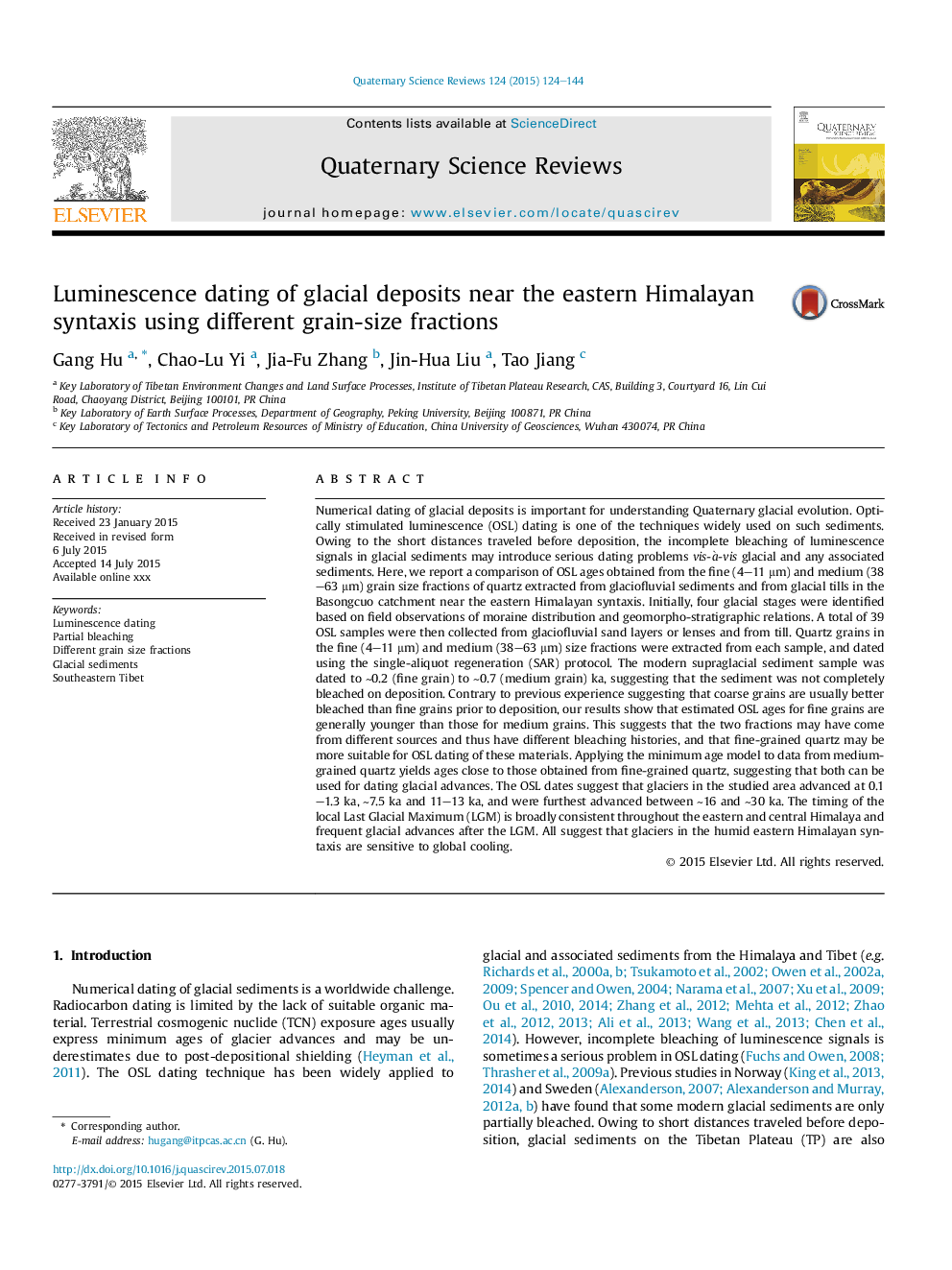| کد مقاله | کد نشریه | سال انتشار | مقاله انگلیسی | نسخه تمام متن |
|---|---|---|---|---|
| 6445510 | 1640810 | 2015 | 21 صفحه PDF | دانلود رایگان |
عنوان انگلیسی مقاله ISI
Luminescence dating of glacial deposits near the eastern Himalayan syntaxis using different grain-size fractions
ترجمه فارسی عنوان
مراجعه به لومینسانس رسوبات یخبندان در نزدیکی سیاتا شرقی شرقی، با استفاده از فاکتورهای مختلف دانه
دانلود مقاله + سفارش ترجمه
دانلود مقاله ISI انگلیسی
رایگان برای ایرانیان
کلمات کلیدی
دوستیابی لومینسانس، سفید کردن جزئی فراوانی اندازه دانه های مختلف، رسوبات یخبندان جنوب شرقی تبت،
موضوعات مرتبط
مهندسی و علوم پایه
علوم زمین و سیارات
زمین شناسی
چکیده انگلیسی
Numerical dating of glacial deposits is important for understanding Quaternary glacial evolution. Optically stimulated luminescence (OSL) dating is one of the techniques widely used on such sediments. Owing to the short distances traveled before deposition, the incomplete bleaching of luminescence signals in glacial sediments may introduce serious dating problems vis-à -vis glacial and any associated sediments. Here, we report a comparison of OSL ages obtained from the fine (4-11 μm) and medium (38-63 μm) grain size fractions of quartz extracted from glaciofluvial sediments and from glacial tills in the Basongcuo catchment near the eastern Himalayan syntaxis. Initially, four glacial stages were identified based on field observations of moraine distribution and geomorpho-stratigraphic relations. A total of 39 OSL samples were then collected from glaciofluvial sand layers or lenses and from till. Quartz grains in the fine (4-11 μm) and medium (38-63 μm) size fractions were extracted from each sample, and dated using the single-aliquot regeneration (SAR) protocol. The modern supraglacial sediment sample was dated to â¼0.2 (fine grain) to â¼0.7 (medium grain) ka, suggesting that the sediment was not completely bleached on deposition. Contrary to previous experience suggesting that coarse grains are usually better bleached than fine grains prior to deposition, our results show that estimated OSL ages for fine grains are generally younger than those for medium grains. This suggests that the two fractions may have come from different sources and thus have different bleaching histories, and that fine-grained quartz may be more suitable for OSL dating of these materials. Applying the minimum age model to data from medium-grained quartz yields ages close to those obtained from fine-grained quartz, suggesting that both can be used for dating glacial advances. The OSL dates suggest that glaciers in the studied area advanced at 0.1-1.3 ka, â¼7.5 ka and 11-13 ka, and were furthest advanced between â¼16 and â¼30 ka. The timing of the local Last Glacial Maximum (LGM) is broadly consistent throughout the eastern and central Himalaya and frequent glacial advances after the LGM. All suggest that glaciers in the humid eastern Himalayan syntaxis are sensitive to global cooling.
ناشر
Database: Elsevier - ScienceDirect (ساینس دایرکت)
Journal: Quaternary Science Reviews - Volume 124, 15 September 2015, Pages 124-144
Journal: Quaternary Science Reviews - Volume 124, 15 September 2015, Pages 124-144
نویسندگان
Gang Hu, Chao-Lu Yi, Jia-Fu Zhang, Jin-Hua Liu, Tao Jiang,
